In Focus: Alternative Workplace Strategies: Open Offices Gaining Traction
An open or hybrid office can help to promote employee collaboration and boost productivity, while also resulting in cost savings.
April 7, 2017 | By Robin Weckesser
Increasingly, companies are seeking creative, alternative workplace solutions that offer a variety of amenities and the latest technology to drive innovation and attract and retain top talent. Open offices continue to gain traction for many reasons, including cost savings resulting from a reduced footprint, recruitment, and the belief that openness promotes collaboration and productivity. Yet, while the office of the future has become more mainstream, many employees remain anxious about change, and senior managers, in particular, often feel a sense of entitlement and are reluctant to give up their privacy.
The fact is that an open office isn’t an open-and-closed proposition. Usually, a workplace requires a carefully considered balance of customized layout options. Design considerations must start with a careful review of your organization’s culture, employee demographics, branding, and business objectives.
Customize and adapt. There is no such thing as a one-size-fits-all workplace strategy, and many options can engage employees in the decision-making process. By applying evidence-based, best practices — including employee feedback, change management plans, and numerous other amenities such as on-site cafes and fitness centers — organizations can deliver open and hybrid offices that enhance workflow and productivity. Other amenities are increasingly part of new workplace solutions, and the most sought-after features include food, wellness programs, sustainability measures such as natural lighting and “green roofs,” courtyards, bike racks, and automated parking.
Anticipate and manage pushback. As mentioned above, some employees may still feel uneasy about switching from private offices to collaborative space. While lack of privacy is part of their apprehension, they may also fear that giving up their office means compromising their status.
Time-tested methods to approach pushback can help involve employees in the workplace transformation process. Traditional change management plans include sending e-mail updates, forming a core project team, interviewing key employees and stakeholders, and creating design mockups. More creative and tech-centric methods include podcasts, video updates, and an Intranet where employees can view plans and provide feedback. Change management plans work most effectively when they are tailored to your staff.
Here are some training examples to consider incorporating into your plan:
Offer guided workshops to help staff reflect and visualize on how they work today and how they could work in alternative settings.
Take employees on a tour of alternative office environments and encourage them to talk with the staff there about their workplace.
Present proposed changes to employees. Then, candidly review the designs and address feedback and concerns.
Transform. As technology and workplace demographics continue to evolve, the office will continue its transformation to accelerate the production cycle and optimize performance. No longer tethered to our desks by a wire, we will become a more flexible workforce with employees enjoying more of a “live-work-play” lifestyle. With customization and the right project team, making the switch to an open or hybrid office can boost creativity, encourage collaboration, and make your employees feel welcome at their home-away-from-home. No matter your industry or location, with due diligence, strategic planning, inspired design, and a change management program, you can make the workplace of the future work for you today.
Robin Weckesser , President, a3 Workplace Strategies
Robin Weckesser is president of a3 Workplace Strategies, a workplace consulting group based in San Jose and serving companies throughout the United States and worldwide. The firm provides a full range of project management and facilities management services, including strategic planning, change management, site selection, design, construction, and relocation oversight, space programming, and open office/collaborative environments.
Read the full article at Area Development.





Sorry, the comment form is closed at this time.